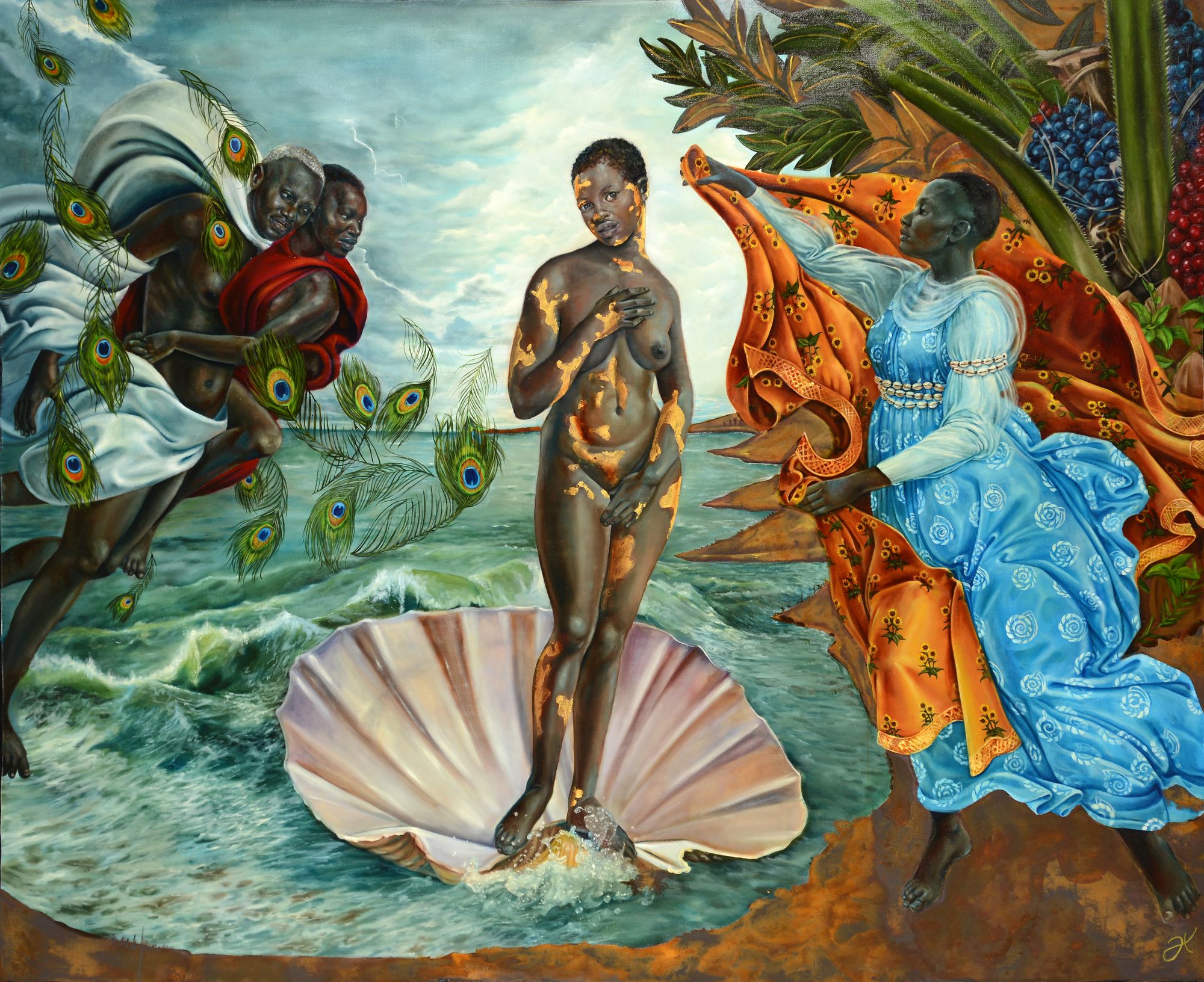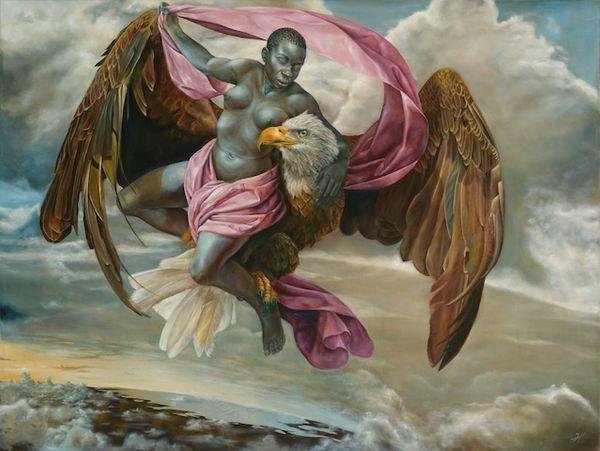Birth of Oshun
Oil on Belgian Linen, 55" x 67"
A stunning woman with short hair and rich caramel-brown skin floats toward the viewer. She is Oshun, the orisha of love, desire, fertility, hope, and harmony. On the left dressed in red, Oya the goddess of winds and storms supports Obatalá, in white, the creator of all humans. The orisha of the ocean Yemayá, identified by her cowrie shells, welcomes her sister and the goddess of “sweet waters,” or rivers, to shore. She readies a golden robe decorated with sunflowers, Oshun’s color and floral attributes. Oshun’s golden markings, suggestive of vitiligo, tell the patakí of her saving humanity by transforming into a peacock and flying up to Olodumare to beg for heavy rains during a severe drought. Her arduous journey into the sun burned the feathers from her head (hence her sheared hair). Swirling in the wind, the peacock feathers hint at Oshun’s sacrifice.
The Birth of Oshun appears familiar because the artist cloaks the painting in classical mythology and Renaissance artistic motifs. Modeled after Sandro Botticelli’s fifteenth-century panel Birth of Venus, Rosales’s version supplants her Roman counterpart. Critiquing Eurocentric ideals of beauty, the painting makes space for Black female empowerment and beauty of all types.
Exhibitions
EntwinedBlack Imaginary To Counter Hegemony (B.I.T.C.H.)
Master Narrative
Master Narrative Tour






